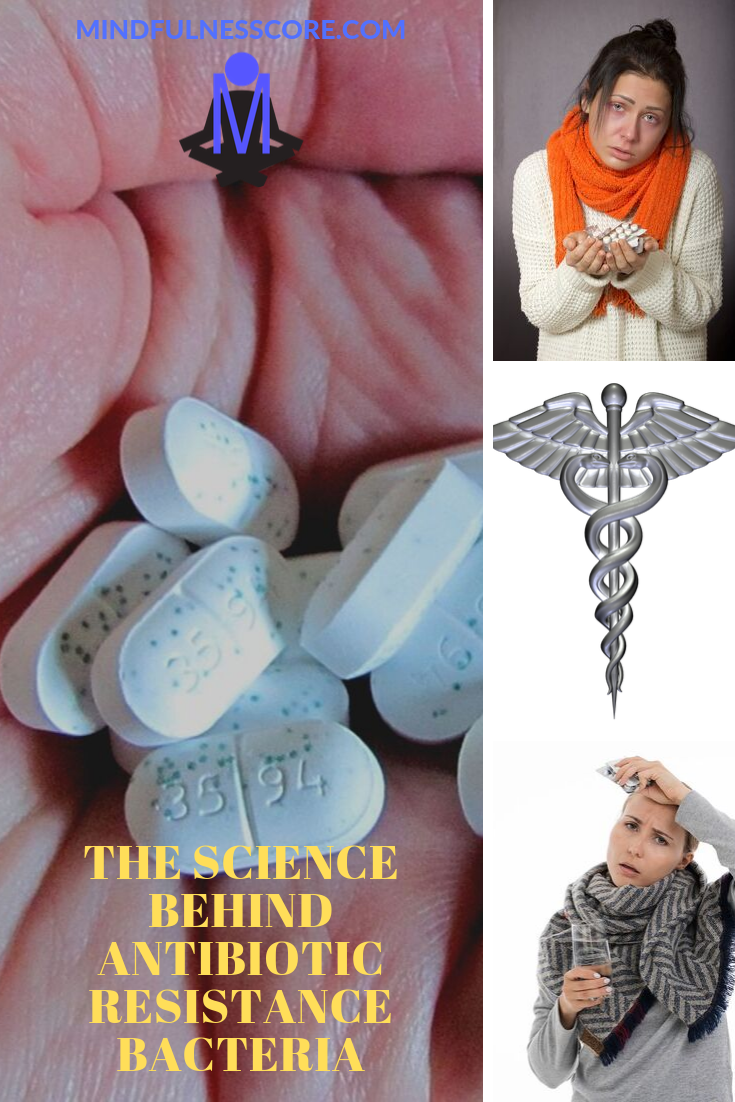The Science Behind Antibiotic Resistance Bacteria

Antibiotics have been around for a number of decades. It surely was a tough time for the human race when antibiotics weren’t around to support the role of the natural immune system in fighting bacteria, viruses, and germs, and protect the body against losing this battle. The number of lives these antibiotics have saved over the years is beyond count. However, all that glitters is not gold and that is true to some extent even in the case of this live savior. Here’s the thing; if excess of something as essential as water can end up hurting your body, you can take it for granted that the excess of antibiotics will surely have an adverse effect as well.
You don’t have to be a healthcare professional to be familiar with the term “antibiotic resistance”. While you may be aware of the gist of it, wouldn’t it be interesting to know how exactly does it happen and the science behind why bacteria, viruses, and the rest of such spooky creatures manage to develop a resistance against a particular type of antibiotics? If so, then you will surely love the content that you are about to read.
What Is Antibiotic Resistance?
Remember the good old times when the easiest solution against a strep throat used to be an antibiotic? But today, apparently, the same antibiotic doesn’t seem to help even a little bit in relieving a strep throat. In the simplest of terms, this is what you call antibiotic resistance. The bacteria causing the strep throat was previously threatened when you took the antibiotic recommended by the doctor. But since you overly relied on the antibiotic and never gave a chance to your natural immunity to cure you of the illness, the bacteria has eventually managed to create a resistance that prevents the antibiotic from producing the same effect.
In other words, the in-built tendency of bacteria to develop a tolerance against the effects of a drug is known as antibiotic resistance. The bacteria could essentially change itself or evolve in a fashion that prevents the drug to be effective. Under such circumstances, the bacteria earn the potential to multiply and survive even with the use of antibiotics and continues to do harm to the body.
Antibiotic Resistance – Is It As Serious As It Sounds?
The straight answer to that query is[restrict] a big “YES”. This is why antibiotic resistance has been added to the list of most pressing concerns for the Center for Disease Control (CDC). Think about it, there are multiple different illnesses that used to be very easily curable with the use of antibiotics a few decades ago. But thanks to the over-reliance on the use of antibiotics, the same bacteria have now gained strength and become tolerant to a wide range of medicines. This leads to an unnecessary complication in treating such illnesses in the present times. From the public health perspective, while the world continues to be confronted with newer, more potent diseases with the passage of time, antibiotic resistance is making it harder to cure the existent ones as well that doubly increase the burden on the health systems across the world.
But the story doesn’t end here. Curing an illness before it spreads to the community is the very foundation on which the entire study of Public Health is premised. However, if the bacteria causing the illness is resistant to multiple antibiotics, it can not only make it impossible to treat the illness in the worst-case scenario but also stretch the time taken to cure it at the very least. The greater the time that the bacteria finds to multiply, the higher is the probability of it spreading it to the family members, friends, colleagues, and eventually, to the community at large. As a consequence, there is a greater likelihood of facing an outbreak of a disease that is no longer convenient to treat with the traditional antibiotics.
Antibiotic resistance, therefore, is the leading cause of why diseases get harder to cure while the treatments get costlier to be implemented.
How Do Bacteria Become Resistant to Antibiotics?
Antibiotic resistance can very well be associated with the process of evolution. Since bacteria experience hostile environments such as that of having to battle against antibiotics, it is a natural phenomenon for them to multiply with mutations or genetic variations in hopes of generating tolerance against the antibiotics.
Imagine that you have a particular strain of bacteria multiplying inside of you. These are the sensitive bacteria that can easily be killed with the use of an antibiotic. However, during the process of multiplication, one of these bacteria is lucky enough to mutate in a way that generates antibiotic resistance. Now, when you take the prescribed antibiotic, all of the sensitive bacteria will be killed. However, the one that found the antibiotic resistance generating mutation will be able to survive. This bacteria will now reproduce to generate a whole colony of bacteria with built-in antibiotic resistance. So, while previously you had a strain that had no tolerance against the antibiotic, now you have a bacterial colony that has developed a tolerance against the antibiotic. Wouldn’t you say that such a colony is going to be potentially more harmful to your body in the long run?
What’s more, is that the bacteria have a natural tendency for horizontal transfer of genes. This means that a resistant strain has the ability to share its piece of DNA that has enabled it to generate antibiotic resistance with a range of other bacteria. If the bacterial colony A was resistant to the drug type A and the bacterial colony B was resistant to the drug type B, after the horizontal transfer of genes, it is more than likely to end up with two different colonies of bacteria both of which are resistant to both the drug types A and B.
Remember that the resistance can manifest itself in various forms. For instance, resistant bacteria may be able to change the location on which the antibiotic supposedly produces its effect. Others may produce special chemicals that work to neutralize the antibiotic before it can start to produce its effect. Others still, develop an ability to push the antibiotic out of the system before it starts to work against the bacteria. As evident, there are multiple ways in which the resistant strain can protect itself against the harms of antibiotics.
Why Is The Antibiotic Resistance Developed In Bacteria?
In all honesty, over-reliance and rather abuse of antibiotics is the leading cause of generating antibiotic resistance in the bacterial colonies. If you are overusing a particular type of antibiotic, that is regarded as a prominent hostile environment against which the bacteria begin to strategize via genetic mutations in hopes of finding resistance. Another common reason is the lack of information that pushes you into overusing such medicines. For instance, it isn’t an uncommon sight for someone to resort to antibiotics to relieve himself of a common cold; being totally oblivious of the fact that a common cold is not caused by bacteria but is rather viral in nature. An antiviral is what you need in such circumstances and taking antibiotics instead can only give an opportunity to the bacteria to evolve and generate resistance against it in the long run.
Lastly, antibiotic resistance is generated when you are righteously taking the medicine for a bacterial disease but fail to complete its course and quit taking it as soon as the symptoms of the illness are relieved. This can give an opportunity to the bacteria to develop antibiotic resistance since the symptoms faint because of the dying bacterial colony. However, if you quit taking the medicine before all of the bacteria have been removed from the body, you give an opportunity to the remaining bacteria to grow and multiply again with mutations that can eventually develop antibiotic resistance against the type of medicine that you took.
Final Note
So, this was all that you needed to know about antibiotic resistance. We tried to keep it simple in order for a layman to be able to get a good idea of what it is and how does it work. With this information, we sincerely hope that you will think twice before abusing an antibiotic in the time to come. Be wary of taking such medicines for an antiviral infection. It is unfortunate that a range of antibiotics is available as over-the-counter medicines at the pharmacies which require no prescription to purchase. As a responsible citizen who cares for his own health as well as for the health of the community at large, it is recommended to always consult with your doctor and have an antibiotic prescribed before you think of starting its course. All in all, it won’t be wrong to conclude that antibiotic resistance is a serious issue that creates hurdles in terms of healthcare not only at the individual’s end but also for the healthcare system as a whole. Being a little cautious, however, can go a long way in making things easier for our next generations.[/restrict]

